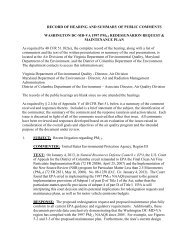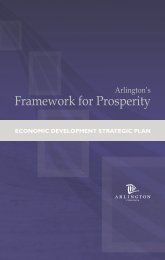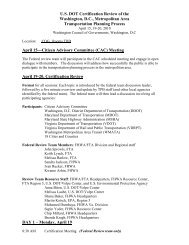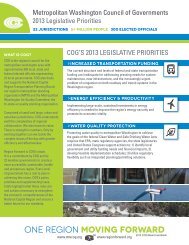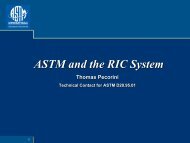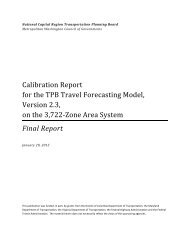PTI Local Government Energy Assurance Guidelines - Metropolitan ...
PTI Local Government Energy Assurance Guidelines - Metropolitan ...
PTI Local Government Energy Assurance Guidelines - Metropolitan ...
You also want an ePaper? Increase the reach of your titles
YUMPU automatically turns print PDFs into web optimized ePapers that Google loves.
Include a Budget for the Plan Update<br />
One local government maxim tends to be accurate: If it is important, it will usually have a budget. There is no<br />
question that an EAP update will cost money. To an extent, it will be possible to estimate the labor and hours<br />
required for the update based on the amount it took to develop the first EAP. Where possible and/or required, ensure<br />
that the EAP update budget amount is included in the relevant department budget for the year in question. Without a<br />
budget, new initiatives tend to lose traction or disappear entirely.<br />
Research the Literature for Updated <strong>Energy</strong> <strong>Assurance</strong> Information<br />
At the time of the EAP update, it is important to review all existing energy assurance information available through<br />
DOE/OE. This office is responsible for local and State government energy assurance efforts, and OE staff should<br />
have an excellent idea about where to find success stories and lessons learned from other cities and counties. <strong>PTI</strong><br />
also will have more case studies completed as local governments start to gain more experience with implementing<br />
their EAPs. <strong>Energy</strong> assurance planning is a new process for most local governments at this time. With each passing<br />
year, the field grows, and new information improves energy assurance efforts. It is clearly in a jurisdiction’s best<br />
interest to exhaustively search for new information—especially energy supply, critical infrastructure, and asset<br />
data—as part of the EAP update.<br />
Update the Primary Contacts Section<br />
One important reason to update the EAP is to ensure that its list of key energy assurance and energy emergency<br />
contacts (see Section 3.7) is updated and accurate. Retiring employees, job changes, promotions, and normal job<br />
attrition contribute to a rapidly changing key energy assurance contact list. Someone, such as the energy assurance<br />
coordinator, will usually be responsible for keeping the list of primary contacts updated on a monthly or quarterly<br />
basis, absent an EAP update. Regardless of this effort, it is a good practice to revisit the key energy assurance contact<br />
list during the EAP update to ensure that the people, titles, and contact information are current. Quick response and<br />
recovery depend on this list being accurate.<br />
3.11.2 Update <strong>Energy</strong> Supply and Asset Data<br />
Traditional relationships between energy suppliers and local governments are changing rapidly with the introduction<br />
of smart grid technologies, sophisticated energy control systems and grid-independent generation options. Projecting<br />
future energy demand and supply is not as simple as it used to be. As new technologies and practices are introduced,<br />
these things will need to be reflected on both the supply and demand side of the energy assurance equation.<br />
<strong>Energy</strong> supply and asset data should be revisited regularly by the energy assurance coordinator and/or a<br />
subcommittee of the energy assurance working group. The local government will need to continuously add assets to<br />
the EAP’s database/list of key assets and energy infrastructure as these important elements are constructed or added<br />
to the local portfolio. As new buildings are constructed and put into operation, their criticality and vulnerability will<br />
need to be assessed as part of the EAP. The same applies to local energy infrastructure. As major new transmission<br />
lines and distribution centers, storage tanks, pipelines, and related assets are added to the local energy infrastructure,<br />
each should be accounted for, to the extent possible, as part of the EAP effort. This requires vigilance and a longterm<br />
commitment to energy assurance.<br />
<strong>Local</strong> <strong>Government</strong> <strong>Energy</strong> <strong>Assurance</strong> <strong>Guidelines</strong> – Version 2.0 | 73



